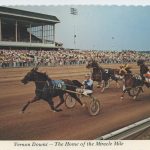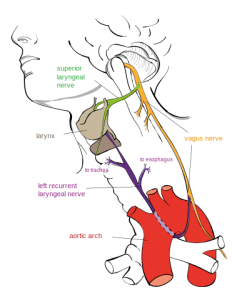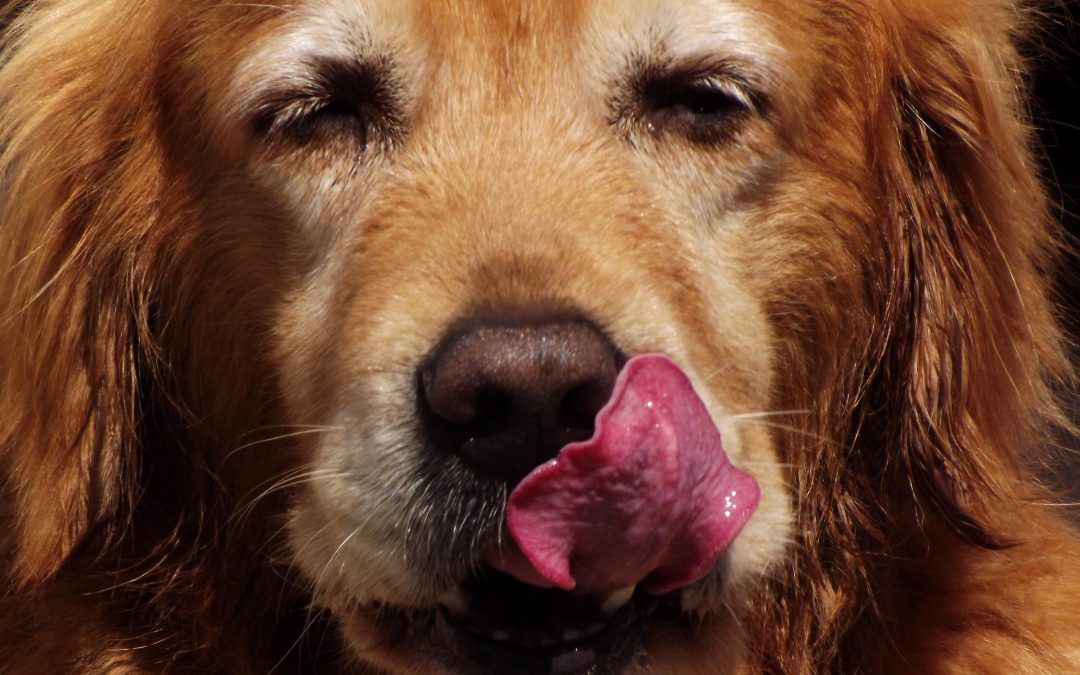 Much of what we know about laryngeal paralysis (LarPar or LP) comes from horses. In horses, it’s sometimes called “roaring”; horses on the track will make strange breath sounds when running hard when they have LP such that they sound like they are roaring.
Much of what we know about laryngeal paralysis (LarPar or LP) comes from horses. In horses, it’s sometimes called “roaring”; horses on the track will make strange breath sounds when running hard when they have LP such that they sound like they are roaring.
But first, some physiology: There are flaps (the epiglottis and arytenoid cartilages) at the back of the throat that close when we swallow food so air goes down the air hole, the trachea, and food and saliva go down the food hole, the esophagus. If the flaps don’t work right, we get coughing and gagging if food goes down the wrong hole. What is more common is change in voice. In horses, they roar; in dogs, their voice gets hoarse.
Full on diagnosis requires a scope looking down the back of the mouth to see if one flap doesn’t move as well as it should. Anything else is a guess.
But there’s a whole pathway of explanation that is being forgotten here: WHY is there a slowness of the flap? And which flap?
Normally, the epiglottis is associated with food swallowing; the arytenoid cartilages are associated with LP – these are the ones that help make sound. Which is why dogs with presumed LP have a change in voice.
But to this point, not once have we discussed why these cartilages are not moving as they should. It’s time to talk about nerves – the fundamentals of how nerves function.
Think back to the last time you sat too long with your legs crossed – when you got up, one leg was tingly and didn’t work great until you got the blood flowing. This is what happens most the time when people talk about so-called “pinched nerves.“ Many times, the decreased blood flow to the nerve is so subtle that we simply have a minor change in nerve function, not even tingling.
In the case of laryngeal paralysis, the recurrent laryngeal nerve is basically sleeping. The recurrent laryngeal nerve is an incredibly long branch off the vagus nerve which originates in the brain stem. This nerve is the one that makes the epiglottis and arytenoid cartilages move.
Anywhere along the pathway of the recurrent laryngeal nerve there can be compromised blood flow which will decrease the nerve’s function, just like in our crossed leg example. Decreased function of the recurrent laryngeal nerve results in decreased functioning of the arytenoid cartilage, resulting in a hoarse voice.
This picture of a human recurrent laryngeal nerve is very similar to that of dogs, and horses for that matter. The pathway runs from the brainstem, all the way down the neck, into the chest, then back up the neck. Decreased movement anywhere along that pathway can affect nerve function.
Here is something you can try to really feel this in action: get on all fours like your dog. Drop your chest down so that your shoulder blades come together, then lift your head up. Do you feel that pressure across the front of your throat? Imagine if you stayed in that position for weeks or months. Do you think that might put pressure on something in the pathway of the recurrent laryngeal nerve?
Bingo.
So-called LarPar has been created.
As a concerned pet owner, you could go to extreme measures and have a tieback surgery performed. In a tieback surgery, the arytenoid cartilage is held in the open position. But we talked at the beginning of this post that those cartilages are involved in helping food go down the food hole. Thus, we discover a side effect of the surgery – aspiration pneumonia. Most of us don’t perform surgeries like that to have our dog die of complications.
An alternative? How about chiropractic, bodywork, massage, acupuncture, physical therapy, canine fitness, or any modality that helps the body to work better? If all we need to do is restore movement so that the laryngeal nerve is no longer compressed, isn’t that worth investigating before doing irreversible surgeries that may have permanent, life shortening side effects?
Have more questions? Consider an office visit or membership: www.healthypawsibilities.com.
(Photo credit recurrent laryngeal nerve: By Jkwchui – Based on drawing by Truth-seeker2004, CC BY-SA 3.0, https://commons.wikimedia.org/w/index.php?curid=30998747)

